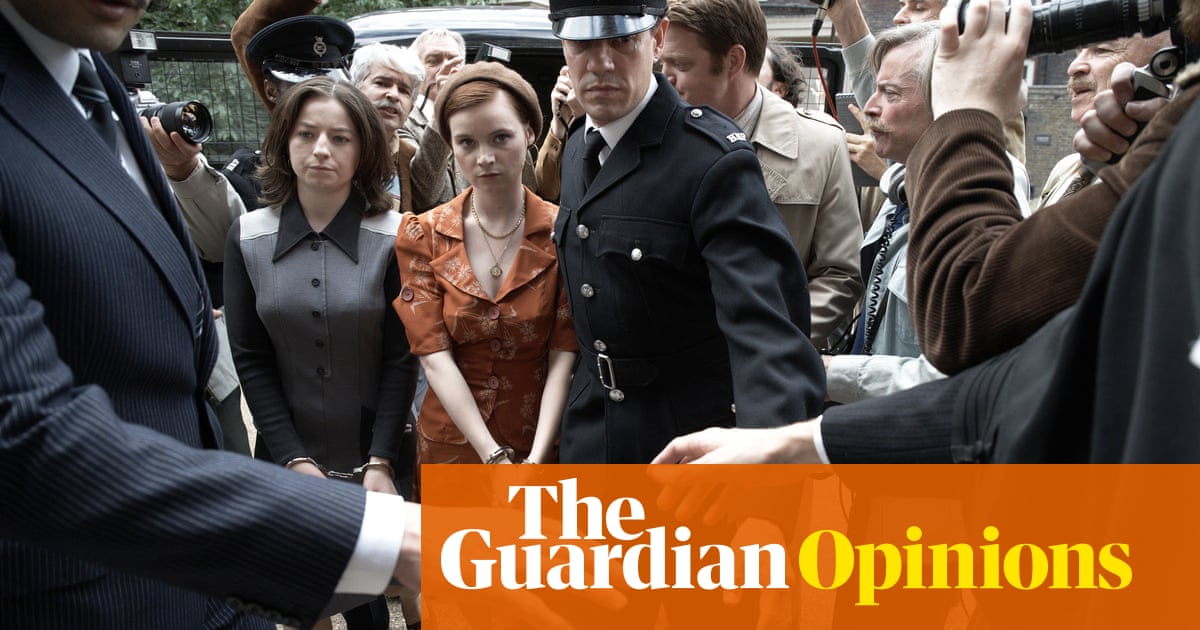Photo credit: www.theguardian.com
Exploring the Complexities of the Troubles: A Look at “Say Nothing”
When news broke about the television adaptation of “Say Nothing,” derived from Patrick Radden Keefe’s popular book, my initial reaction was one of skepticism. Concerns about clichéd portrayals, with actors donning exaggerated accents and costumes, flooded my mind. The reservation stemmed not from the book’s substance—an incisive exploration of a tragic murder—but rather from a historical depiction often prone to oversimplification, especially in mainstream media.
The arrival of “Say Nothing” comes at a notable time when interest in the Northern Ireland conflict, particularly surrounding the Troubles, is surging. Since Brexit, there has been a growing awareness of the complexities that shape this history, driven in part by cultural phenomena such as Anna Burns’s acclaimed novel “Milkman,” and a renewed fascination with Northern Irish music and identity. This wave of curiosity is particularly evident among millennials in England and the Republic of Ireland, many of whom recognize the Troubles as a significant yet overlooked chapter in their histories.
Public expressions of affinity for Irish culture are on the rise. In social settings, it is common to hear individuals, regardless of their backgrounds, embracing Irish traditions—whether through chants in pubs or casual conversations about familial ties to the culture. This newfound enthusiasm, however, can sometimes feel superficial, underscoring a desire to engage with a history that remains fraught with complexity.
After watching several episodes of “Say Nothing,” I was pleasantly surprised to find that the series approaches its subject matter with the gravity it deserves. The narrative revolves around the abduction and murder of Jean McConville, a mother unjustly accused of collaborating with British forces. Her tragic story is interwoven with that of the Price sisters, Dolours and Marian, who became prominent figures in the IRA’s activities during the Troubles.
In the show, the Price sisters’ journey from civil rights activists to IRA militants is depicted with striking nuance. Their involvement in significant events, such as the Burntollet Bridge incident, serves as a catalyst for their radicalization. The chilling scenes showcased graphically convey the deep personal and political convictions that drove their actions, including the infamous Old Bailey bombing that drastically altered lives. This dual narrative—following the plight of McConville’s orphaned children alongside the Price sisters’ radicalization—creates a potent examination of loyalty, betrayal, and the consequences of political violence.
While the performances, particularly by emerging talent like Lola Petticrew as young Dolours, are commendable, the portrayal is not without its flaws. The series opts to focus predominantly on certain narratives, sidelining the experiences of loyalist paramilitaries, which results in a somewhat one-dimensional view of the conflict. Furthermore, the somewhat romanticized depiction of the sisters’ militant personas may lead viewers to perceive them as anomalies rather than products of their environment.
Despite its imperfections, “Say Nothing” successfully navigates some of the common pitfalls in representing this tumultuous period. It refrains from simplifying the Troubles as merely a struggle for national identity, instead contextualizing it within Ireland’s broader colonial history and the socioeconomic injustices faced by the Catholic working-class population in the North. The series opens with a monologue addressing these systemic issues, although the delivery may lack polish, the intent to highlight these complexities is commendable.
Such narratives challenge prevailing perceptions of the Troubles and remind viewers that class struggle played a critical role in shaping the conflict. As discourse around identity politics continues to evolve, it is vital to engage deeply with historical contexts rather than relying on surface-level language or trendy terms. The shift towards referring to “the North of Ireland” might reflect an emerging political consciousness, yet it underscores a need for genuine, informed discussions about the past.
In conclusion, while I might tend to sip my Guinness while eschewing the trendy phrases that have emerged in contemporary dialogue, “Say Nothing” compels us to confront and explore the intricacies of a deeply rooted history. The series serves as a reminder that our understanding of the past must be nuanced and informed, fostering a space for sustained engagement with the legacies of the Troubles.
Source
www.theguardian.com

